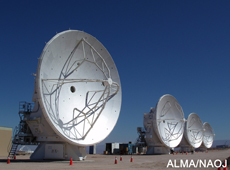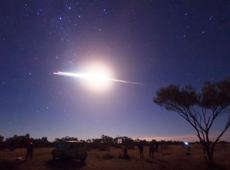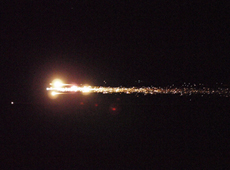Q. Why do you think HAYABUSA attracted so much attention from the general public?

Asteroid explorer HAYABUSA (Courtesy of Akihiro Ikeshita)
To tell the truth, I honestly don’t understand why. In the past, the world was impressed when Apollo 13 returned safely to Earth after encountering system trouble, but that was a manned mission that involved the lives of its crew, so the interest was not surprising. But HAYABUSA was an unmanned explorer. Many people got emotionally involved in its mission, and I was surprised at the strong feelings the explorer generated. Probably, the situation reflected the spirit of the Japanese people, with HAYABUSA’s miraculous revival and its seven-year journey through space with wounds all over its body, overcoming numerous crises.
There were so many people who wanted to support HAYABUSA after learning about it on the news, but this couldn’t have happened if you’d planned it. People were simply charmed by HAYABUSA - there was no pressure to support it - and that charm created a boom in interest. The way planetariums and the media rode the crest of this wave and produced shows about HAYABUSA created a large synergetic effect.
Based on this experience, one may wonder why Japan’s first ever Mars explorer, NOZOMI, which was launched in 1988, didn’t gain that much attention. NOZOMI managed to approach Mars even though it had various troubles on its way there. But in the end, we couldn’t inject it into the Martian orbit and the mission ended in failure. I wonder why people weren’t that interested in NOZOMI at the time. I suppose HAYABUSA’s special feature of a return to Earth greatly affected people.
Q. How do you think we should utilize the popularity of HAYABUSA?

ALMA Telescope under construction in Chile. (Courtesy of NAOJ)
HAYABUSA’s achievement gave Japanese children great confidence in our space technology. When Japanese athletes win medals at the Olympic Games, people feel very proud of them. The same way, HAYABUSA made young people impressed by Japanese science and technology, and gave them something to be very proud of. I’m pretty sure they felt "Japan is awesome!" Once they start thinking like that, the next feeling they probably have is, "Let’s try that ourselves." I think the best way to use HAYABUSA’s popularity is to encourage such thinking in young people, so that they develop an interest in something.
It is a very important task for us to raise children who are going to be responsible for the future of Japan. But with today’s stable social systems and hyper-networked world, human beings start to see stability as a primary value. It may even happen that more young people will think that all they need to do is follow the roads that have already been paved. If this happens, there will be fewer people wanting to do creative work. To prevent this attitude from taking root, we cannot ignore education. If kids think, "We’d like to do that, too," or, "We may be able to do that," I think things are going to move in the right direction. In that sense, HAYABUSA was very effective, so before this sensation disappears, I would like to create the next "space star."
For example, there are two "stars" at NAOJ: the Subaru Telescope and the ALMA (Atacama Large Millimeter/submillimeter Array) Telescope. Besides having an open house every year, we carry out various kinds of public activities, such as stargazing parties, a public screening at a 4D movie theater, junior astronomy classes during summer holidays, etc. On these occasions, we talk about a "star" such as the Subaru Telescope, but we try to emphasize the interesting, fun and mysterious parts of astronomy. Specifically, we make sure to tell guests about something that we haven’t learned yet. If we just tell them about the results - things we already understand - people might think, "Since all these things are known, there is nothing else we need to do." When there are unknowns, people think they’d like to study them as well, right? Similarly, there are many "stars" in other fields, such as science and medicine, so if we all use these "stars," I think we can help solve the problem of children turning off science. I think our top priority is to make people feel amazed by and interested in science.




